Preface
Thank you for buying the “AQUOS PHONE SERIE mini SHL24” (simply called
the “SHL24” or the “product” from here on).
Before using the product, be sure to read the “Basic Manual” (this manual) and
“Notes on Usage”/“Setting Guide” available on the au homepage to ensure
correct use. After you have finished reading the manuals, be sure to keep them
accessible and store the printed manuals (“取扱説明書” (Basic Manual), “ご利
用にあたっての注意事項” (Notes on Usage) and “設定ガイド” (Setting Guide))
(Accessories) in safe places so that you can refer to them whenever you need
them. If you lose the printed manuals (Accessories), contact an au shop or
Customer Service Center.
Operating Instructions
■ “Basic Manual” and “Setting Guide”
The “Basic Manual” (this manual) and “Setting Guide” available on the au
homepage describe basic operations of major functions.
For detailed descriptions of various functions, refer to the “Instruction Manual
application” (Japanese version) that can be used on the product or “Full
Instruction Manual” (Japanese) available on the au homepage:
(http://www.au.kddi.com/english/support/manual/)
■ “Instruction Manual Application” (Japanese/English
Version)
You can use the “Instruction Manual application” (Japanese version) on the
product to check detailed operational procedures.
Also, you can activate intended functions from an explanation screen
depending on the functions.
On the home screen, tap [アプリ] (APPS) [[取扱説明書] (Instruction
Manual).
Also, you can use the “Instruction Manual application” (English version) on the
product to check operational procedures.
On the home screen, tap [APPS] [[Basic Manual] after switching the display
language to English (zP.15).
• To use the application for the first time, you need to download and install it by
Basic Manual
• The company names and product names appearing in this manual are
trademarks or registered trademarks of their respective holders.
• For exemptions, refer to “Notes on Usage” available on the au homepage.
February 2014, 1st Edition
following on-screen instructions.
For inquiries, call:
Customer Service Center
For general information and charges (toll free)
From fixed-line phones:
From au cell phones:
area code not required
Tapping “DIAL” and “zero” will connect you to an operator after calling
“157” on your au cell phone.
For service canceling procedure or operation in case of loss or
theft (toll free)
From fixed-line phones:
From au cell phones:
In case above numbers are not available, call toll-free:
area code not required
0120-977-033 (except Okinawa)
0120-977-699 (Okinawa)
Keitai Guarantee Service Center
For loss, theft or damage (toll free)
From fixed-line phones/au cell phones:
0120-925-919
Business hours: 9:00 to 21:00 (7 days a week)
Cell phone and PHS operators collect and recycle
unused telephones, batteries and battery
chargers at stores bearing the logo regardless
of brand and manufacturer to protect the
environment and reuse valuable resources.
Safety Precautions
Before you start using the product, be sure to read the “Notes on Usage”
available on the au homepage to ensure correct use.
Before you assume that the product is malfunctioning, check for possible
remedies in the following au Customer Support site of au homepage:
(http://www.au.kddi.com/english/support/)
When Using the Product
• Communication is not possible even inside the service area in places where
the signal does not reach (e.g. tunnels and basements). Also,
communication may not be possible in poor reception areas. Communication
may be interrupted if you move into a poor reception areas during
communications.
• Since this product uses radio waves, the possibility of communication
intercepts by third parties cannot be eliminated. (Though the LTE/CDMA/
GSM/UMTS system has highly secure confidential communication features.)
• The product is compatible with the international roaming service. Each
network service varies depending on the area and service content.
For details, refer to “auのネットワークサービス・海外利用” (au Network
Services/International Roaming) described in “Instruction Manual
application” (Japanese) or “Full Instruction Manual” (Japanese) available on
the au homepage.
• Since the product is a radio station under the Radio Law, you may be asked
to temporarily submit the product for inspection in accordance with the Radio
Law.
• The IMEI information of your cell phone is automatically sent to KDDI
CORPORATION for maintenance and monitoring operational status of your
cell phone.
• Since the battery is built into the product, you cannot replace it yourself. For
replacing the battery, contact an au shop or Customer Service Center.
• Take care not to inconvenience people around you when you use the product
in a public place.
• If you are using the product overseas, check the relevant laws and
regulations of the country/region you visit.
• When the product is used by a child, parents or guardians should thoroughly
read the “Basic Manual” (this manual) or “Notes on Usage”/“Setting Guide”/
“Full Instruction Manual” (Japanese) available on the au homepage and
teach the child how to use it.
Cell Phone Etiquette
■ Use of cell phones is not allowed in the following
places!
• Do not use a cell phone while driving a car or riding a motorbike or bicycle. It
may cause a traffic accident. Use of a cell phone while driving a car or
motorbike is prohibited by law. Use of a cell phone while riding a bicycle may
be punishable by some regulations.
• Be sure to turn off the product while you are aboard an airplane. Otherwise,
safety of your flight may be compromised.
List of Packaged Items
Before you start using the product, make sure that you have all the following
packaged items with the product.
required. Set the e-mail address in advance.
◎ Deletion of the safety information and configurations for Safety
Notification Mail are not available during wireless LAN (Wi-Fi®)
connection.
◎ The Company does not guarantee the quality of this service. The
Company, regardless of the cause, shall not be liable for any problems
related to registration of safety information due to the concentration of
access to this service or equipment errors, any loss due to the damage,
ruination, etc. of safety information or any loss arising from registered
safety information.
■ Using Emergency Rapid Mail
Emergency Rapid Mail is a service to collectively deliver Earthquake Early
Warning and Tsunami Warning provided by the Japan Meteorological Agency,
and Disaster and Evacuation Information provided by the national government
or the local governments to au phones in the specified areas.
• At the time of purchase, receiving setting of Emergency Rapid Mail
(Earthquake Early Warning, and Disaster and Evacuation Information) is set
to “受信する” (Receive). You can receive Tsunami Warning by setting 災害・
避難情報 (Disaster and Evacuation Information).
When receiving Earthquake Early Warning, secure your safety and act
composedly according to the surrounding situations.
When receiving Tsunami Warning, leave sea coasts immediately and
evacuate to safe places such as hills and strongly-built tall buildings.
A From the au Disaster Countermeasure menu, [緊急速報メー
ル] (Emergency Rapid Mail).
The inbox is displayed.
Select a mail to check to display the details of the mail.
Warranty
(Japanese)
削除 (Delete)
設定
(Settings)
SHL24
• 取扱説明書 (Basic Manual) (Japanese)
• ご利用にあたっての注意事項 (Notes on Usage) (Japanese)
• 設定ガイド (Setting Guide) (Japanese)
The following items are not included in the package.
• microSD memory card
• AC adapter
• Earphone
• microUSB cable
• Purchase a specified charger (sold separately).
• Illustrations of cell phones in this manual are only for reference. They may
look different from the actual product.
◎ The battery is built into the product.
Using au Disaster Countermeasure
Application
au Disaster Countermeasure is an application in which you can use Disaster
Message Board, Emergency Rapid Mail (Earthquake Early Warning, Disaster
and Evacuation Information, and Tsunami Warning), Disaster Voice Messaging
Service and Disaster Information/Donation website.
A On the home screen, [APPS] [[au災害対策] (au Disaster
Countermeasure).
The au Disaster Countermeasure menu is displayed.
■ Using Disaster Message Board
Disaster Message Board is a service to enable customers in disaster areas to
register their safety information via LTE NET when large-scale disasters, such
as an earthquake whose Japan seismic scale is approximately 6-lower or
more, occur. The registered safety information can be checked by customers
using au phones, and also from other carriers’ cell phones, PCs, etc.
For details, refer to “Disaster Message Board Service” on the au homepage.
A From the au Disaster Countermeasure menu, [災害用伝言
板] (Disaster Message Board).
Follow the on-screen instructions for registration/confirmation.
Delete received mails.
緊急地震速報 (Earthquake Early Warning)
Set whether to receive Earthquake Early Warning.
• Tap [受信する] (Receive)/[受信しない] (Not
receive) [[OK].
災害・避難情報 (Disaster and Evacuation
Information)
Set whether to receive Disaster and Evacuation
Information, and Tsunami Warning.
• Tap [受信する] (Receive)/[受信しない] (Not
receive) [[OK].
音量 (Volume)
Set the volume of the receiving sound.
バイブ (Vibrator)
Set whether to activate the vibrator at the time of
reception.
マナー時の鳴動 (Linkage to the manner mode)
Set whether to notify you with the manner mode
settings applied in the manner mode.
緊急地震速報 (Earthquake Early Warning)
Check the receiving sound and vibration of the
product for Earthquake Early Warning.
災害・避難情報 (Disaster and Evacuation
Information)
Check the receiving sound and vibration of the
product for Disaster and Evacuation Information,
and Tsunami Warning.
◎ This service is available only in Japan (Not available overseas).
◎ Emergency Rapid Mail is free of both information charges and
communication charges.
◎ Emergency Rapid Mail cannot be received while the power is turned off
or during a call.
◎ Emergency Rapid Mail may not be received during communication such
as while sending and receiving e-mails/SMSs and while using the
browser or when you are in a place where the signal cannot be received
(e.g. tunnels and basements) or the signal is weak, even within the
service area.
◎ Emergency Rapid Mail which failed to be received will not be able to be
received again.
◎ To register the safety information, an e-mail address (〜ezweb.ne.jp) is
◎ When you receive Emergency Rapid Mail, you will be notified by the
dedicated alarm tone and the vibrator. The alarm tone cannot be
changed.
* When you receive Earthquake Early Warning, you will be notified by the alarm
tone, voice (“地震です” (Jishin-desu)) meaning that an earthquake has
occurred and the vibrator.
◎ Information intended for the areas of other than your present location may
be received.
◎ As for this service, the Company shall not be liable for any damage
incurred on the users resulted from failure or delay of information delivery
due to communication disturbance or system failure, contents of the
information or other problems that are not supposed to be blamed on the
Company.
◎ For details on Earthquake Early Warning and Tsunami Warning provided
by the Japan Meteorological Agency, refer to the agency’s homepage.
(http://www.jma.go.jp/jma/indexe.html)
Earthquake Early Warning
◎ Earthquake Early Warning notifies areas where a strong shaking (Japan
seismic scale 4 or more) is expected when an earthquake whose
maximum Japan seismic scale is predicted of 5-lower or more has been
detected.
◎ This service detects an earthquake (P-wave, preliminary tremors) near
the seismic center immediately after the earthquake occurs and
automatically calculates its location, scale and predicted strength of the
shaking. After that, you will be notified of the earthquake as soon as
possible within a few seconds to dozens of seconds before a strong
shaking from the earthquake (S-wave, principal shock) occurs.
◎ In the vicinity of the seismic center, a strong shaking may reach you
before Earthquake Early Warning.
◎ The Earthquake Early Warning distribution system provided by this
service is different from that provided by TV, radio and other
communication media and thus the arriving time of Earthquake Early
Warning may be different among those media.
Tsunami Warning
◎ Tsunami Warning notifies areas including target sea coasts of Major
Tsunami Warning and Tsunami Warning provided by the Japan
Meteorological Agency.
Disaster and Evacuation Information
◎ Disaster and Evacuation Information notifies information related to the
safety of citizens, such as evacuation advisories, evacuation orders or
various alarms delivered by the national government or the local
governments.
■ Using Disaster Voice Messaging Service
Disaster Voice Messaging Service is a service to record voices with a
smartphone and deliver them as a voice message to people to whom you want
to deliver the information that you are safe when large-scale disasters occur.
A From the au Disaster Countermeasure menu, [災害用音声お
届けサービス] (Disaster Voice Messaging Service).
Follow the on-screen instructions.
◎ To use this service via Wi-Fi®, making initial settings via LTE/3G networks
is required.
◎ Voice messages can be recorded for up to 30 seconds.
◎ Voice messages can be exchanged among au phones as well as other
carriers’ cell phones and PHS devices.
◎ Voices may not be heard when the media sound volume is set to low.
◎ When no free space is left on the internal memory, voice messages may
not be saved or played.
◎ Some cell phones cannot receive voice messages. For details, refer to
the au homepage.
■ Using Disaster Information/Donation Website
You can check the histories of Disaster and Evacuation Information delivered
by the local governments, Disaster Information portal and donation website.
A From the au Disaster Countermeasure menu, [災害情報/義
援金サイト] (Disaster Information/Donation website).
Select an item to check.
Illustrations and Descriptions in This
Manual
■ Note on Key Illustrations
In this manual, the key illustrations are simplified as shown below.
Names and Functions of Parts
■ Front/Right Side
■ Description of Operations for Selecting Item/Icon/Key
etc.
In this manual, operation procedures are described as below.
Explanation
Description
On the home screen,
[APPS] [[Phone]
[Enter “141” [[Call].
Phone”. Then tap in order of
Tap “APPS” at the top of the 3-Line Home screen
and tap “
“
”, “
“
Hold f down for at least 2 seconds.
” and “
”.
”. Lastly, tap
f (hold down for at
least 2 seconds).
* Tapping is to select a key or icon displayed on the screen by lightly tapping it with
your finger.
■ Notes on Illustrations/Screenshots
The screenshots in this manual are simplified and may look different from the
actual screens. Also, part of the screen may be omitted.
In this manual, part of the
screen such as icons are
omitted.
A Earpiece (Receiver)
B Proximity sensor/Light sensor
Proximity sensor prevents inadvertent operations of the touch panel during
a call.
Light sensor detects the ambient brightness and adjusts the brightness of
display.
C Display (Touch panel)
D ud Volume up/down key
Adjust the volume.
Long touch “u” on the Welcome Sheet (Lock Screen) to turn on the mobile
light.
Long touch “d” on the home screen or Welcome Sheet (Lock Screen) to
set/disable the manner mode.
E Charging/Incoming indicator
F In camera lens
G f Power key
Turn the screen on/off.
Hold it down to turn on/off the power, set the manner mode, etc.
■ Back/Top and Bottom
Actual screen
In this manual
◎ Explanations of this manual are based on the case when the color of the
main unit is “Pink” as an example.
◎ Explanations of this manual are based on the case when the product is
held vertically. If you hold it horizontally, menu items/icons/on-screen
keys etc. may be different.
◎ Menu items, layers and icons described in this manual may be different
according to functions being used and conditions.
◎ In this manual, “microSD™ memory card (commercially available)”,
“microSDHC™ memory card (commercially available)” and “microSDXC™
memory card (commercially available)” are abbreviated as “microSD
memory card” or “microSD”.
◎ All of the indicated amounts exclude tax unless otherwise specified.
H TV antenna
I Wi-Fi®/Bluetooth® antenna
J Mobile light
K Out camera lens
L Infrared port
Sold by: KDDI CORPORATION,
OKINAWA CELLULAR TELEPHONE COMPANY
Manufactured by: SHARP CORPORATION
1
2
3
4
5
6
M & mark
Hold it over a reader/writer when using Osaifu-Keitai®/NFC.
Send and receive data via IC communication.
N Speaker
O Internal antennas
P GPS antenna
Q au Nano IC Card (LTE)/microSD memory card cover
R au Nano IC Card (LTE) tray slot
S microSD memory card slot
T IMEI tray
Allows you to confirm the product’s IMEI.
U Mouthpiece (Microphone)
Transmits your voice to the other party during a call. It is also used for
recording sounds. Take care not to cover the microphone with your fingers
etc. when using it.
V Strap eyelet
W Earphone/Microphone jack
X External connection jack
When you connect the common AC adapter 04 (sold separately), the
microUSB cable 01 (sold separately), etc. to the product, some applications
may not function properly since the geomagnetic sensor is affected by the
magnetism of connected devices. Use the product after removing the
cable.
◎ The back cover of the product cannot be removed. Removing it forcibly
may cause damage or a fault.
◎ The battery is built into the product, and cannot be removed by the
customer. To force the power off, refer to “Turning the Power Off Forcibly”
(zP.14).
TV antenna, Wi-Fi®/Bluetooth® antenna, internal antennas, GPS antenna
◎ Antennas are built into the product. Do not cover with hand during calls or
data communication, or place stickers over antennas. Doing so may
affect call/communication quality.
Using the au Nano IC Card (LTE)
au Nano IC Card (LTE)
The au Nano IC Card (LTE) records your personal information such as phone
numbers.
The product is compatible with au Nano IC Card (LTE) only. You cannot use
the product by inserting the au IC-Card, micro au IC-Card or au Micro IC Card
(LTE) for au phones and smartphones instead.
au Nano IC Card (LTE)
IC (metal) part
◎ Make sure to unplug the microUSB plug of the common AC adapter 04
(sold separately) etc. from the product when attaching or removing the au
Nano IC Card (LTE).
Attaching the au Nano IC Card (LTE)
Removing the au Nano IC Card (LTE)
Before attaching the au Nano IC Card (LTE), turn the product off and remove
the microSD memory card.
A Open the au Nano IC Card (LTE)/microSD memory card
Before removing the au Nano IC Card (LTE), turn the product off and remove
the microSD memory card.
A Open the au Nano IC Card (LTE)/microSD memory card
cover.
cover.
Using a microSD Memory Card
Attaching a microSD Memory Card
Before attaching a microSD memory card, turn the product off.
A Open the au Nano IC Card (LTE)/microSD memory card
B Slowly pull the au Nano IC Card (LTE) tray straight out by
B Slowly pull the au Nano IC Card (LTE) tray straight out by
cover.
hooking a finger on it.
hooking a finger on it.
au Nano IC
Card (LTE) tray
au Nano IC
Card (LTE) tray
C Put the au Nano IC Card (LTE) on the au Nano IC Card
C Remove the au Nano IC Card (LTE) from the au Nano IC
(LTE) tray.
Make sure the notches on the au Nano IC Card (LTE) and au Nano IC
Card (LTE) tray face the proper orientation and put the card slowly on the
tray.
IC (metal) part up
au Nano IC Card (LTE)
Notches
Card (LTE) tray.
D Slowly insert the au Nano IC Card (LTE) tray into the au
Nano IC Card (LTE) tray slot, taking care not to let the tray
be caught on the metal parts on both sides of the slot.
Confirm the position of the au Nano IC Card (LTE) tray slot and the
orientation of the au Nano IC Card (LTE) tray carefully, and insert the tray
all the way into the slot in the direction of the arrow. Inserting the tray
forcibly may damage the tray.
Metal parts
au Nano IC Card (LTE)
tray slot
E Close the au Nano IC Card (LTE)/microSD memory card
cover.
au Nano IC Card (LTE) tray
D Slowly insert the au Nano IC Card (LTE) tray into the au
Nano IC Card (LTE) tray slot, taking care not to let the tray
be caught on the metal parts on both sides of the slot.
Confirm the position of the au Nano IC Card (LTE) tray slot and the
orientation of the au Nano IC Card (LTE) tray carefully, and insert the tray
all the way into the slot in the direction of the arrow. Inserting the tray
forcibly may damage the tray.
Metal parts
au Nano IC Card (LTE)
tray slot
E Close the au Nano IC Card (LTE)/microSD memory card
cover.
◎ Inserting the au Nano IC Card (LTE) tray not deeply enough may prevent
the product from functioning properly.
◎ Take care not to lose or damage the removed au Nano IC Card (LTE)
tray.
B Slowly insert the microSD memory card into the microSD
memory card slot.
Confirm the orientation for inserting, then insert in the direction of the arrow
until it clicks and is locked.
Releasing the microSD memory card before it is locked may cause it to
pop out.
microSD memory
card slot
Metal part up
C Close the au Nano IC Card (LTE)/microSD memory card
cover.
◎ Make sure that the top/bottom and front/rear of the microSD memory card
are facing correctly.
Trying to force a wrongly oriented card into the slot could make it
impossible to remove the card or result in damage.
◎ Do not touch the terminal part of a microSD memory card.
Removing the microSD Memory Card
Before removing the microSD memory card, turn the product off.
A Open the au Nano IC Card (LTE)/microSD memory card
cover.
B Slowly push the microSD memory card in all the way.
After it clicks, let the microSD memory card come back out a little without
releasing it. Releasing the card when it is pushed deeply into the slot may
cause it to pop out.
C Slowly pull the microSD memory card straight out.
D Close the au Nano IC Card (LTE)/microSD memory card
cover.
◎ Do not remove the microSD memory card forcefully. Doing so may result
in damage or data loss.
◎ The microSD memory card may become warm after a long time use, but
this is not a fault.
Checking the IMEI
An IMEI (international mobile station equipment identity) is a special
identification code assigned to each phone. You can pull the IMEI tray out to
confirm the IMEI of the product.
A Turn the product off and remove the microSD memory
card.
For details on removing the microSD memory card, refer to “Removing the
microSD Memory Card” (zP.10).
B Slowly pull the IMEI tray straight out by hooking a finger on
it.
microSD memory
card slot
IMEI tray
Charging with the Specified AC Adapter (Sold
Separately)/Specified DC Adapter (Sold
Separately)
The followings are the explanation of how to connect the common AC adapter
04 (sold separately)/common DC adapter 03 (sold separately) to charge. For
details on the specified AC adapter (sold separately)/specified DC adapter
(sold separately), refer to “Introduction of Peripheral Devices” (zP.19).
A Confirm the direction of the microUSB plug of the common
AC adapter 04 (sold separately)/common DC adapter 03
(sold separately) and insert it in the direction of the arrow
to the external connection jack of the product.
Charging with a PC
The followings are the explanation of how to charge the internal battery by
connecting the product to a USB port of a PC through which the battery can be
charged.
A Connect the microUSB cable 01 (sold separately) to a USB
port of a PC after the PC is activated completely.
External
connection jack
Protruding edges
External
connection jack
USB port of a PC
microUSB cable 01
(sold separately)
Protruding edges
B Connect the microUSB cable 01 (sold separately) to the
product after the product is activated completely.
◎ If you use the microUSB cable to charge the internal battery, it may take
the internal battery longer to be fully charged than if you use the specified
AC adapter (sold separately).
◎ Turn the protruding side of the microUSB plug down and insert the
microUSB plug to the external connection jack of the product straightly.
Inserting the microUSB plug in the wrong direction may result in damage
to the external connection jack of the product.
◎ The product is turned on when it is connected to a PC while the power is
turned off.
◎ If you charge the internal battery when the battery has run out, the
charging/incoming indicator may not illuminate. In such case, use the
specified AC adapter (sold separately) for charging.
Common AC adapter 04 (sold separately)/
Common DC adapter 03 (sold separately)
B Plug the common AC adapter 04 (sold separately) power
plug into a 100 V AC power outlet/Plug the common DC
adapter 03 (sold separately) plug into a cigarette lighter
socket.
Common AC adapter
04 (sold separately)
Common DC adapter
03 (sold separately)
C When charging is finished, pull the microUSB plug of the
common AC adapter 04 (sold separately)/common DC
adapter 03 (sold separately) straight out from the external
connection jack of the product.
D Unplug the common AC adapter 04 (sold separately) power
plug from the power outlet/Unplug the common DC adapter
03 (sold separately) plug from the cigarette lighter socket.
◎ Although you can charge the internal battery while the power is turned on,
charging time lengthens.
◎ The IMEI is information required when requesting servicing or repairs.
◎ The IMEI tray cannot be removed from the main unit. Take care not to
apply force when handling.
◎ You can also operate the product to confirm the IMEI.
On the home screen, tap [APPS] [[Settings] [[Device info]
[[Status] and confirm the IMEI field.
Charging
Charging
When you purchase the product, the internal battery is not fully charged. Be
sure to charge the internal battery before use.
• If the performance of the battery does not recover (e.g. the usable time after
each charge has become extremely short), the internal battery may be at the
end of service life. On the home screen, tap [APPS] [[Settings] [[Device
info] [[Status] [[Battery status] to check the charging performance of the
internal battery.
• While charging, the charging/incoming indicator illuminates in red, and the
battery icon is displayed with
charged to approximately 95%, the charging/incoming indicator illuminates
in green. When charging is finished, the charging/incoming indicator goes
out.
superimposed. When the battery is
◎ Depending on the operation procedure and usage environment, the
temperature inside the product may get high and the product may even
get heated. In such case, charging may stop for security reasons.
◎ Charging the internal battery while using the camera function etc. may
lengthen the charging time.
◎ If you perform various operations with a specified charger (sold
separately) connected to the product, charging/discharging may take
place repeatedly in a short time. Frequently charging the internal battery
shortens its service life.
◎ If you charge the internal battery when the battery has run out, the
charging/incoming indicator may not illuminate soon. However, charging
is in progress.
◎ If the charging/incoming indicator flashes in red, force the power off
(zP.14) and turn the product on again. If the indicator continues to flash,
stop charging the internal battery and contact an au shop or the Keitai
Guarantee Service Center.
◎ If you stop charging while the charging/incoming indicator still illuminates
during charging, the cell phone may be left not fully charged even if
is displayed on it. In such case, the usage times shorten.
7
8
9
10
11
12
13
�
Turning the Power On/Off
■ Turning the Power On
A f (hold down for at least 2 seconds).
◎ The initial setting of the touch panel will be executed until “AQUOS
PHONE” disappears from the screen after the power is turned on. Do not
touch the screen, otherwise touch panel operations may not be
performed properly.
■ Turning the Power Off
A f (hold down for at least 2 seconds).
B [Power off] [[OK].
■ Restarting the Product
You can restart the product after turning it off.
A f (hold down for at least 2 seconds).
B [Reboot] [[OK].
■ Turning the Power Off Forcibly
You can force the product to turn off if the screen freezes or you are unable to
turn the product off.
A f (hold down for at least 8 seconds).
Release your finger after the product vibrates to turn the power off.
◎ If the power is turned off forcibly, unsaved data will be deleted. Do not
turn the power off forcibly unless you cannot operate the product.
■ Booting in Safe Mode
Turn the product off then boot it in a state close to that at time of purchase.
If operation of the product is unstable, it may be due to applications installed
after purchasing the product. If symptoms improve when booted in safe mode,
uninstalling the applications you installed may remedy symptoms.
A f (hold down for at least 2 seconds).
B Long touch “Power off” [[OK].
“Safe mode” is displayed at the bottom of the screen when the product is
booted in safe mode.
To end safe mode, reboot the product.
◎ When the product is turned off, you can boot it in safe mode by f
(hold down for at least 2 seconds) to turn it on, and then long touching
“d” until the Welcome Sheet (Lock Screen) is displayed after the au
logo disappears.
◎ It is recommended that you back up your data on the product before
booting in safe mode.
◎ Widgets that you yourself created may be deleted.
◎ Safe mode is not a normal state for the product to be booted in. End safe
mode before normal use.
Turning the Screen On/Off
Using the 3-Line Home
If you press f or no operation is made for a specified time, the screen is
turned off.
■ Turning the Screen On
A f while the screen is turned off.
◎ When you put the product in your pocket, bag, etc., turn the screen off.
Putting the product in while the screen is turned on may cause
inadvertent operations.
Welcome Sheet (Lock Screen)
The Welcome Sheet (Lock Screen) is displayed if you turn the screen on.
The 3-Line Home is a home screen which consists of the Apps Sheet, the
Widgets Sheet and the Shortcuts Sheet. You can use the function by tapping
an icon/a widget/shortcut on each sheet.
• You can switch each sheet by tapping “APPS”, “WIDGETS” or
“SHORTCUTS” on the Sheet Switcher, or sliding/flicking the home screen to
the left/right.
Switching sheets
《Apps Sheet》《Widgets Sheet》《Shortcuts Sheet》
■ Viewing the 3-Line Home
《Welcome Sheet (Lock Screen)》
” to the bottom of the screen to unlock.
” up to display “Video tutorial”, “Welcome sheet
Slide “
Tap, long touch or slide “
setting” and shortcuts.
A Wallpaper
B Owner info key
Tap to display texts according to items set for “Owner info” in “Lock &
Security”.
C Info Area
Flick to the left/right to switch the weather, stock prices information, widgets,
media information and date and time.
Switching the Display Language to
English
You can switch the display language for function names and other items to
English.
A On the home screen, [アプリ] (APPS).
B [設定] (Settings).
C [言語と文字入力] (Language & input).
D [言語(Language)を選択] (Select language).
E [English].
A Status bar
B Sheet Switcher
Long touch Sheet Switcher, drag it to the destination and release your finger
to move it.
C Apps Sheet/Widgets Sheet/Shortcuts Sheet
D Navigation Bar
E Scroller
Displayed when the screen is scrolled. You can scroll the screen by sliding
the displayed scroller up/down.
F Separator
Pinch out vertically on the home screen to add a separator. You can delete
the separator by pinching it in vertically.
G Social Board
Confirm information for registered SNS.
◎ A separator cannot be added if there are no applications, etc. between
separators.
■ Arranging the Home Screen
A When the top of any sheet of the home screen is displayed,
slide the sheet down.
Alternatively, tap “e” on any sheet.
B [Home settings].
Using the Status Bar
Icons
The notification icons to notify you of a missed call, a new mail message, a
running operation, etc. are displayed on the left side of the status bar, while the
status icons to show the status of the product are on the right side.
■ Main Notification Icons
Icon
Description
Missed call
New mail message (E-mail)
New mail message (SMS)
New mail message (PC-mail)
New mail message (Gmail)
Making a call, talking, receiving a call
Call on hold
Answering memo
Space on the internal memory available less than approx. 275
MB
Reading the internal memory/a microSD memory card
Installation of application completed, update available
Software update available
Icons collected
◎ Some icons are displayed with their number superimposed on them.
■ Main Status Icons
Icon
〜
〜
Description
Time
Battery level
〜 : Battery level display
: No battery
• While charging, the battery icon is displayed with
superimposed.
Airplane mode set
Signal strength (Receiving electric field)
〜 : Level display
: Out of service area
• The icon indicating network is displayed at the upper left.
• During a communication, the icon is displayed with
superimposed.
Manner mode status
: Standard manner mode
: Silent manner mode
: Drive manner mode
During a call using hands-free
Microphone set to “Mute” during a call
Answering memo set
: No Answering memo
: Answering memo (one to
nine entries)
: Answering memo (ten entries)
Using the Notification/Status Panel
In the notification/status panel, you can check the details on notification icons
and status icons or activate an application corresponding to the icon.
You can also set the manner mode, VeilView, etc.
A Slide the status bar down.
《Notification/Status panel》
A Function buttons
Switch settings of the frequently used function by one touch.
B Function button displaying/hiding bar
Tap it to display/hide function buttons on the second and subsequent
row.
C Music controller
Play music with LISMO.
D Notification area
Check the status of the product and contents of notifications.
Depending on the information, you can pinch out/pinch in to enlarge/
shrink notifications or tap notifications/functions to activate a
corresponding application.
• Flick a notification to the left/right to delete it. You may not be able to
delete a notification depending on the notification.
E Settings key
Tap it to make various settings for the product.
F Rearrange key
Sort function buttons.
G Clear
Tap it to clear all the notifications. You may not be able to delete a
notification depending on the notification.
H Close bar
Slide it up to hide the notification/status panel.
Switching Input Methods
You can switch input methods for character entry.
• Following operation explanations use “Japanese - iWnn IME - SH edition”.
A While the keyboard is displayed, open the notification
panel.
B [Choose input method] [[English (US)]/[Japanese].
Switching Software Keyboards
A On the character entry screen, [
] [[Change input UI]
[[Set QWERTY keyboard]/[Set 12 keyboard].
Introduction of Peripheral Devices
Troubleshooting
■ au Carrying Case F Black (0105FCA) (sold separately)
au Carrying Case G Black (0106FCA) (sold separately)
au Carrying Case F Black
■ Common AC Adapter 03 (0301PQA) (sold separately)
Common AC Adapter 04 (0401PWA) (sold separately)
Common AC Adapter 03 Navy (0301PBA) (sold separately)
Common AC Adapter 03 Green (0301PGA) (sold separately)
Common AC Adapter 03 Pink (0301PPA) (sold separately)
Common AC Adapter 03 Blue (0301PLA) (sold separately)
AC Adapter JUPITRIS (White) (L02P001W) (sold separately)
AC Adapter JUPITRIS (Red) (L02P001R) (sold separately)
AC Adapter JUPITRIS (Blue) (L02P001L) (sold separately)
AC Adapter JUPITRIS (Pink) (L02P001P) (sold separately)
AC Adapter JUPITRIS (Champagne) (L02P001N) (sold
separately)
Common AC adapter 04
• Illustrations and forms may not match depending on the AC adapter you
use.
■ Common DC adapter 03 (0301PEA) (sold separately)
■ Portable charger 02 (0301PFA) (sold separately)
■ microUSB cable 01 (0301HVA) (sold separately)
microUSB cable 01 Navy (0301HBA) (sold separately)
microUSB cable 01 Green (0301HGA) (sold separately)
microUSB cable 01 Pink (0301HPA) (sold separately)
microUSB cable 01 Blue (0301HLA) (sold separately)
◎ For the latest information about available peripheral devices, check the
au homepage (http://www.au.kddi.com/english/) or contact Customer
Service Center.
◎ The product does not support ASYNC/Fax transmission.
◎ The above-mentioned peripheral devices can be purchased from au
Online Shop.
(http://auonlineshop.kddi.com/)
Before you assume that the product is malfunctioning, check the following:
Trouble
Battery usage time is
short.
Cannot make calls.
Cannot receive calls.
Cannot hear the other
party.
Cannot recognize a
microSD memory card/
Cannot find target data.
Cannot operate the
keys/touch panel.
Cannot charge the
battery.
Cannot turn on the
power.
Cannot operate/The
screen does not
respond/Cannot turn off
the power.
Cannot operate the
touch panel as
intended.
Screen response is
slow when you tap on
the screen/press the
keys.
auIC card(UIM) error. is
displayed.
The power is turned off
automatically.
The power is turned off
while the wake-up logo
is displayed.
(out of service area
icon) is displayed.
A message indicating
that charging is
necessary is displayed.
When making a call, a
beeping sound is heard
from the earpiece and
a connection cannot be
established.
Detail
• Make sure you do not often use the product in
places where
displayed. (zP.17)
(out of service area) is
• Make sure the internal battery does not
approach the end of its service life. Check the
battery status. (zP.11)
• Is the internal battery charged enough? (zP.11)
• Suspend the functions not being used. (zP.18)
• Is an au Nano IC Card (LTE) inserted? (zP.7)
• Is the power turned on? (zP.14)
• Is reception good enough? (zP.17)
• Is the product within the service area? (zP.17)
• Is the power turned on? (zP.14)
• Is an au Nano IC Card (LTE) inserted? (zP.7)
• Make sure you are not covering the earpiece
with your ear.
Place the earpiece over your earhole.
• Is a microSD memory card inserted properly?
(zP.10)
• Make sure data is not saved on the internal
memory. Data can be saved on the internal
memory besides a microSD memory card.
• Turn off the power and then turn it on.
• Is the power turned on? (zP.14)
• Is the power plug of the specified charger (sold
separately) securely plugged into an outlet or a
cigarette lighter socket? (zP.11)
• Is the internal battery charged? (zP.11)
• Did you hold f down? (zP.14)
• You can force the power off by holding down
f for at least 8 seconds and releasing your
finger after the product vibrates. Turn the
product on again after a while. (zP.14)
• Make sure you are not operating with hands
wearing gloves etc.
• Make sure you are not operating with the tip of a
fingernail or with foreign object between the
screen and your fingers.
• Restart the product. (zP.14)
• Screen response may be slowed down when a
large amount of data is stored in the product or
being transmitted between the internal memory
and a microSD memory card.
• Is an au Nano IC Card (LTE) inserted? (zP.7)
• Make sure the battery has not run out. (zP.11)
• Make sure the battery has not run out. (zP.11)
• Is reception good enough? (zP.17)
• Is the product within the service area? (zP.17)
• Is your hand off the area around the internal
antenna? (zP.7)
• The battery is almost empty. (zP.11)
• Is reception good enough? (zP.17)
• Is the product within the service area? (zP.17)
• The wireless line is busy or the other party is on
another line. Try again later.
If symptoms do not improve after checking each of the above, information is
provided through au Customer Support on the au homepage below.
(http://www.au.kddi.com/english/support/)
14
15
16
17
18
19
20
Updating Software
The product supports the software update.
A On the home screen, [APPS] [[Settings] [[Device info]
[[Software update].
B
Software
update
Auto-check
settings
Check whether software update is necessary or not.
The confirmation starts when you tap “Yes”. When it is
necessary, you can download data for software update.
Set whether to regularly check presence of data for
software update available.
■ Notes on Software Update
• You are charged for data communication when connecting to the Internet
from the product by using packet communication.
• When software update is necessary, you will be informed on au homepage,
etc. For details, contact an au shop or Customer Service Center (call toll-free
157). In addition, users of the SHL24 will receive a notice from au, when
software update is necessary to improve the functionality of the SHL24.
• It is recommended to back up your data before updating software.
• If the software update is performed, the product will restart before and after
the update.
• If the software update has failed or stopped, perform the same procedures
again.
• If the software update fails, it may become impossible to operate the product.
If this happens, bring it to an au shop or PiPit (not accepted by some shops).
• Charge the battery sufficiently before starting update. If the battery level is
insufficient or the battery runs out during the update, the software update will
fail.
• Check out the signal reception status. The software update may fail if the
product is in a place with bad signal reception status.
• Various data registered on the product (address books, mails, still pictures,
music data, etc.) and information of settings will not be changed even after
software is updated. However, note that data may not be protected
depending on the state of the product (fault, damage, getting wet with water,
etc.).
• After software is updated, the download of next update software may
automatically start (consecutive update).
• The software update is not available during international roaming.
Do not conduct the following operations during the software update
• Do not move during software update.
The following operations are not available during the software update
• Operations are not available during software update. Making a call to 110
(Police), 119 (Fire and Ambulance), 118 (Regional Coast Guard
Headquarters) or 157 (Customer Service Center) is not available either. Also,
the alarm etc. does not function.
After-Sales Service
■ When Asking for Repair
For repair, contact Keitai Guarantee Service Center.
During the
warranty period
Outside the
warranty period
Repairs will be done based on the <> described on the
warranty card.
We shall repair the product for a charge as requested by
the customer if repair renders it usable.
◎ Before handing in the product for repair, make a backup of the contents
of memory since they may disappear during repair. Note that the
Company shall not be liable for any damages and loss of income should
the contents of memory be altered or lost.
◎ Recycled parts that meet the Company’s quality standards are
sometimes used for repair.
◎ au cell phones collected by Replacement cell phone delivery service
which you used before are recycled to cell phones for replacement after
repairs. Also parts replaced by au after-sales service are collected and
recycled by the Company. They are not returned to customers.
■ Performance Parts for Repair
The Company retains performance parts for repair of the SHL24 main unit and
its peripheral devices for 4 years after discontinuation of production.
“Performance parts for repair” refers to parts required for maintaining the
functions of the product.
■ Warranty Card
At the store of purchase, thoroughly check and read the name of the retailer,
date of purchase and other necessary details filled in on the warranty card,
and be sure to keep it in a safe place.
■ Keitai Guarantee Service Plus LTE
An after-sales service membership program on a monthly basis called “Keitai
Guarantee Service Plus LTE” (monthly fee: 380 yen, tax excluded) is available
for using your au cell phone for a long time without worries.
This service expands coverage for many troubles including malfunction, theft
and loss. For details of this service, check on the au homepage or contact
Keitai Guarantee Service Center.
◎ You can apply for membership only at the time of purchasing your au cell
phone.
◎ Once you cancel the membership, you cannot reapply for it until you
purchase an au cell phone next time.
◎ Note that when changing the model or purchasing an extra cell phone,
this service only covers the most recently purchased au cell phone.
◎ When an au cell phone is handed over to you or someone else, the “Keitai
Guarantee Service Plus LTE” membership is also handed over to the
successor of the cell phone.
◎ When you get a new au cell phone by changing the model, purchasing
an extra cell phone, etc., the “Keitai Guarantee Service Plus” or “Keitai
Guarantee Service Plus LTE” membership for the old au cell phone is
automatically canceled.
◎ Service contents are subject to change without notice.
■ au Nano IC Card (LTE)
The au Nano IC Card (LTE) is lent to you by au. In case of loss or damage, the
card will be replaced at your expense. When malfunction is suspected, or in
case of theft or loss, contact an au shop or PiPit.
■ After-Sales Service
If you are unsure about anything regarding after-sales service, contact the
following service counter.
Customer Service Center (for service canceling procedure or operation in
case of loss or theft)
From a fixed-line phone,
From an au cell phone, 113 without area code (toll free)
0077-7-113 (toll free)
Keitai Guarantee Service Center (for loss, theft or damage)
From a fixed-line phone/an au cell phone,
0120-925-919 (toll free)
Business hours 9:00 to 21:00 (7 days a week)
■ au After-Sales Service Information
Service contents
Replacement cell phone
delivery service
(spontaneous failure: 1st year)
Replacement cell phone
delivery service
(spontaneous failure: 2nd year
and later)
Replacement cell phone
delivery service
(partial damage, water soak,
irreparable damage, theft and
loss)
Holding over and repair
(spontaneous failure: 1st year)
Holding over and repair
(spontaneous failure: 2nd year
and later)
Holding over and repair
(partial damage)
Holding over and repair
(water soak and irreparable
damage)
Holding over and repair
(theft and loss)
Keitai Guarantee
Service Plus LTE
member
Non-Keitai
Guarantee Service
Plus LTE member
Free
Customer charge
1st: 5,000 yen
2nd: 8,000 yen
Customer charge
1st: 5,000 yen
2nd: 8,000 yen
Free
Free (three-year
warranty)
Customer charge
Upper limit: 5,000
yen
Customer charge
10,000 yen
N/A
N/A
N/A
N/A
Free
Actual cost
Actual cost
Actual cost
N/A
(By model
replacement)
* Charge amounts are all tax excluded.
Replacement cell phone delivery service
◎ When you have trouble with your au cell phone, you can have a cell
phone for replacement (same model and color as your old one) delivered
to any destination that you specify by calling us. Please return your old
faulty au cell phone within 14 days after the cell phone for replacement is
delivered to you.
◎ You can use this service up to twice within one year starting from the day
when you first use this service. If you have not used this service over the
past one year at the time of your application for this service, the
application will be regarded as your first time. If you have, the application
will be regarded as your second time.
* For details, check on the au homepage.
Holding over and repair
◎ Damages and malfunctions intentionally caused by the customer as well
as those due to modification (e.g. disassembly, change of parts, painting,
etc.) by the customer are not covered by this service.
◎ You cannot receive a refund for replacement of the outer casing due to
stains, scratches, paint removal, etc. on the outer casing.
Main Specifications
Display
Weight
Size (W×H×D)
Memory (built-in)
Continuous talk
time (in Japan)
Continuous talk
time (overseas
(GSM))
Continuous
standby time (in
Japan)
Continuous
tethering time
Maximum Wi-Fi®
tethered
connections
Continuous
standby time
(overseas (GSM))
Charging time
1Seg continuous
watching time*1
Camera device
Approx. 4.5 inches, approx. 16.77 million colors, IGZO,
1,080×1,920 (FHD)
Approx. 115 g (including the internal battery)
Approx. 63 mm×124 mm×9.9 mm (thickest part approx.
10.3 mm)
ROM: Approx. 16 GB
RAM: Approx. 2 GB
Approx. 980 min.
Approx. 620 min.
Approx. 510 hours (while LTE is used)
Approx. 610 hours (while 3G is used)
Approx. 420 min. (LTE on WAN)
Approx. 600 min. (3G on WAN)
10 devices
Approx. 600 hours
Common AC adapter 04 (sold separately): Approx. 120
min.
Common DC adapter 03 (sold separately): Approx. 260
min.
Approx. 8 hours and 00 min. (earphone)
Approx. 7 hours and 30 min. (speaker)
Out camera
CMOS image sensor
In camera
CMOS image sensor
Effective pixels
Out camera
Approx. 13.10 million pixels
In camera
Approx. 1.20 million pixels
Bluetooth®
function
Network
environment
Interface
Communication method: Bluetooth® Standard Ver.4.0
Output: Bluetooth® Standard Power Class 2
Communication distance*2: Within 10 m with no
obstacles in the range
Compatible Bluetooth® profiles*3: HSP (Headset Profile),
HFP (Hands-Free Profile), A2DP (Advanced Audio
Distribution Profile), AVRCP (Audio/Video Remote
Control Profile) Ver.1.3, OPP (Object Push Profile), SPP
(Serial Port Profile), PBAP (Phone Book Access
Profile)*4, HID (Human Interface Device Profile), HDP
(Health Device Profile), PAN (Personal Area Networking
Profile), PXP (Proximity Profile)*5, FMP (Find Me
Profile)*5, ANP (Alert Notification Profile)*5, PASP (Phone
Alert Status Profile)*5, TIP (Time Profile)*5, DUN (Dial-up
Networking Profile)*6
Frequency bands: 2.4 GHz band
Wireless LAN (Wi-Fi®) function: IEEE 802.11a/b/g/n (2.4
GHz/5 GHz)/ac*7 conformant
microUSB jack, 3.5φ (quadrupoles) earphone/
microphone jack (supported earphones: tripolar
headphone (Lch/Rch/GND) and quadrupolar earphone
with microphone (Lch/Rch/GND/MIC))
*1 The 1Seg continuous watching time varies depending on the usage.
*2 It changes according to objects obstructing devices and signal reception.
*3 This is the specification provided in Bluetooth® standards for making
communication between Bluetooth®-compatible devices in accordance with their
intended use.
*4 Some contents of address books data may not be properly displayed on the
device of the other party.
*5 This profile supports Bluetooth® Standard Ver.4.0.
*6 Supported for some car navigation systems only. See the au homepage for usage.
*7 Supported for Wi-Fi CERTIFIED™ ac. Refer to the respective companies’ websites
for information on supported products.
◎ The continuous talk time and continuous standby time may drop to less
than half depending on the battery charging status, usage environment
such as temperature, reception condition at the location where the
product is used, and the function settings.
Specific Absorption Rate (SAR) of Cell
Phones
This model 【SHL24】 mobile phone complies with Japanese technical
regulations and international guidelines regarding exposure to radio waves.
This mobile phone has been designed in observance of the Japanese
technical regulations regarding exposure to radio waves (*1) and limits to
exposure to radio waves recommended by equivalent international guidelines.
These international guidelines were set out by the International Commission on
Non-Ionizing Radiation Protection (ICNIRP), which is in collaboration with the
World Health Organization (WHO), and the permissible limits include a
substantial safety margin designed to assure the safety of all persons,
regardless of age and health condition. The Japanese technical regulations
and international guidelines define the limits using a unit of measurement
known as the Specific Absorption Rate (SAR), which represents the average
amount of radio frequency energy absorbed by the human head. The SAR limit
for mobile phones is 2.0 W/kg. The highest SAR value for this mobile phone
when tested for use at the ear is 0.473 W/kg. There may be slight differences in
SAR levels among individual products, but they all satisfy the limit. The actual
SAR of this mobile phone while talking on the phone can be well below that
indicated above. This is due to automatic changes in the power level of the
mobile phone to ensure it only outputs the minimum power required to
communicate with a base station. Therefore in general, the closer you are to a
base station, the lower the power output of the mobile phone.
This mobile phone can be used in positions other than against your ear. This
mobile phone satisfies the international guidelines when used with au Carrying
Case F Black (0105FCA) (sold separately)/au Carrying Case G Black
(0106FCA) (sold separately) recommended by KDDI (*2).
In case you are not using the au Carrying Case F Black (0105FCA) (sold
separately)/au Carrying Case G Black (0106FCA) (sold separately), use a
product that contains no metal parts, and one that can hold the mobile phone
at least 1.5 cm away from your body.
The World Health Organization has stated that “a large number of studies have
been performed over the last two decades to assess whether mobile phones
pose a potential health risk. To date, no adverse health effects have been
established as being caused by mobile phone use”. If you would like to know
more detailed information, please refer to the WHO website.
(http://www.who.int/docstore/peh-emf/publications/facts_press/
fact_english.htm)
Please refer to the websites listed below if you would like to know more
detailed information regarding SAR.
○ Ministry of Internal Affairs and Communications website:
(http://www.tele.soumu.go.jp/e/sys/ele/index.htm)
○ Association of Radio Industries and Businesses website:
(http://www.arib-emf.org/index02.html)
○ au homepage:
(http://www.au.kddi.com/english/)
○ SHARP homepage:
(http://www.sharp.co.jp/products/menu/phone/cellular/sar/index.html)
*1 Technical regulations are defined by the Ministerial Ordinance Related to the Radio
Law (Article 14-2 of Radio Equipment Regulations).
*2 Regarding the method of measuring SAR when using mobile phones in positions
other than against the ear, international standards (IEC62209-2) were set in March
of 2010.
On the other hand, regarding the technical standards of Japan, ministerial
ordinance to revise part of the Ministerial Ordinance related to Radio Law (Article
14-2 of Radio Equipment Regulations) has been issued in August 2013, and will be
enforced on April 1, 2014.
CE Declaration of Conformity
FCC Notice
In some countries/regions including Europe, there are restrictions on the
use of 5GHz WLAN that may limit the use to indoors only.
If you intend to use 5GHz WLAN on the device, check the local laws and
regulations beforehand.
Hereby, Sharp Telecommunications of Europe Ltd, declares that this
SHL24 is in compliance with the essential requirements and other relevant
provisions of Directive 1999/5/EC.
A copy of the original declaration of conformity can be found at the
following Internet address:
(http://www.sharp.co.jp/k-tai/)
■ Mobile Light
Do not point the illuminated light directly at someone’s eyes.
Be especially careful not to shoot small children from a very close distance.
Do not use Mobile light near people’s faces. Eyesight may be temporarily
affected leading to accidents.
■ AC Adapter
Any AC adapter used with this handset must be suitably approved with a 5Vdc
SELV output which meets limited power source requirements as specified in
EN/IEC 60950-1 clause 2.5.
■ Battery - CAUTION
Use specified Charger only.
Non-specified equipment use may cause malfunctions, electric shock or fire
due to battery leakage, overheating or bursting.
The battery is embedded inside the product. Avoid removing the embedded
battery since this may cause overheating or bursting.
Do not dispose of the product with ordinary refuse. Take the product to an au
Shop, or follow the local disposal regulations.
Charge battery in ambient temperatures between 5°C and 35°C; outside this
range, battery may leak/overheat and performance may deteriorate.
■ Volume Level Caution
To prevent possible hearing damage, do not listen at high volume
levels for long periods.
■ Headphone Signal Level
The maximum output voltage for the music player function, measured in
accordance with EN 50332-2, is 120 mV.
■ European RF Exposure Information
Your mobile device is a radio transmitter and receiver. It is designed not to
exceed the limits for exposure to radio waves recommended by international
guidelines. These guidelines were developed by the independent scientific
organization ICNIRP and include safety margins designed to assure the
protection of all persons, regardless of age and health.
The guidelines use a unit of measurement known as the Specific Absorption
Rate, or SAR. The SAR limit for mobile devices is 2 W/kg and the highest SAR
value for this device when tested at the ear is 0.287 W/kg* and when worn on
the body is 0.274 W/kg*.
For body-worn operation, this mobile device has been tested and meets the RF
exposure guidelines when used with an accessory containing no metal and
positioning the handset a minimum of 1.5 cm from the body. Use of other
accessories may not ensure compliance with RF exposure guidelines.
As SAR is measured utilizing the devices highest transmitting power the actual
SAR of this device while operating is typically below that indicated above. This
is due to automatic changes to the power level of the device to ensure it only
uses the minimum level required to reach the network.
The World Health Organization has stated that present scientific information
does not indicate the need for any special precautions for the use of mobile
devices. They note that if you want to reduce your exposure then you can do
so by limiting the length of calls or using a hands-free device to keep the
mobile phone away from the head.
* The tests are carried out in accordance with international guidelines for testing.
- This device complies with part 15 of the FCC Rules. Operation is subject to
the following two conditions:
(1) This device may not cause harmful interference, and (2) this device must
accept any interference received, including interference that may cause
undesired operation.
- Changes or modifications not expressly approved by the manufacturer
responsible for compliance could void the user’s authority to operate the
equipment.
■ Information to User
This equipment has been tested and found to comply with the limits of a Class
B digital device, pursuant to Part 15 of the FCC Rules. These limits are
designed to provide reasonable protection against harmful interference in a
residential installation. This equipment generates, uses and can radiate radio
frequency energy and, if not installed and used in accordance with the
instructions, may cause harmful interference to radio communications.
However, there is no guarantee that interference will not occur in a particular
installation; if this equipment does cause harmful interference to radio or
television reception, which can be determined by turning the equipment off
and on, the user is encouraged to try to correct the interference by one or more
of the following measures:
1. Reorient/relocate the receiving antenna.
2.
3. Connect the equipment into an outlet on a circuit different from that to
Increase the separation between the equipment and receiver.
which the receiver is connected.
4. Consult the dealer or an experienced radio/TV technician for help.
■ 5 GHz WLAN Operation in USA
Within the 5.15-5.25 GHz band, UNII devices are restricted to indoor
operations to reduce any potential for harmful interference to co-channel
Mobile Satellite Services (MSS) operations.
■ FCC RF Exposure Information
Your handset is a radio transmitter and receiver. It is designed and
manufactured not to exceed the emission limits for exposure to radio
frequency (RF) energy set by the Federal Communications Commission of the
U.S. Government.
The guidelines are based on standards that were developed by independent
scientific organizations through periodic and thorough evaluation of scientific
studies. The standards include a substantial safety margin designed to assure
the safety of all persons, regardless of age and health.
The exposure standard for wireless handsets employs a unit of measurement
known as the Specific Absorption Rate, or SAR. The SAR limit set by the FCC is
1.6 W/kg.
Highest SAR value:
Model
FCC ID
At the Ear
On the Body
SHL24
APYHRO00201
1.01 W/kg
0.91 W/kg
This device was tested for typical body-worn operations with the back of the
handset kept 1.0 cm from the body. To maintain compliance with FCC RF
exposure requirements, use accessories that maintain a 1.0 cm separation
distance between the user’s body and the back of the handset. The use of belt
clips, holsters and similar accessories should not contain metallic components
in its assembly.
The use of accessories that do not satisfy these requirements may not comply
with FCC RF exposure requirements, and should be avoided.
The FCC has granted an Equipment Authorization for this model handset with
all reported SAR levels evaluated as in compliance with the FCC RF emission
guidelines. SAR information on this model handset is on file with the FCC and
can be found at (http://transition.fcc.gov/oet/ea/fccid/) under the Display Grant
section after searching on the corresponding FCC ID (see table above).
Additional information on Specific Absorption Rates (SAR) can be found on the
FCC website at (http://www.fcc.gov/encyclopedia/radio-frequency-safety).
21
22
23
24
25
26
27
�
![shl24_basic_e[1].pdf-第1页.png](https://img01.ziliaoku.com/38ec5853054240eb91f23f3a01141758/previews/f4/1f/df/f41fdfbbdf874788a39db5283ed86f75.pdf-1.png)
![shl24_basic_e[1].pdf-第2页.png](https://img01.ziliaoku.com/38ec5853054240eb91f23f3a01141758/previews/f4/1f/df/f41fdfbbdf874788a39db5283ed86f75.pdf-2.png)
![shl24_basic_e[1].pdf-第1页.png](https://img01.ziliaoku.com/38ec5853054240eb91f23f3a01141758/previews/f4/1f/df/f41fdfbbdf874788a39db5283ed86f75.pdf-1.png)
![shl24_basic_e[1].pdf-第2页.png](https://img01.ziliaoku.com/38ec5853054240eb91f23f3a01141758/previews/f4/1f/df/f41fdfbbdf874788a39db5283ed86f75.pdf-2.png)
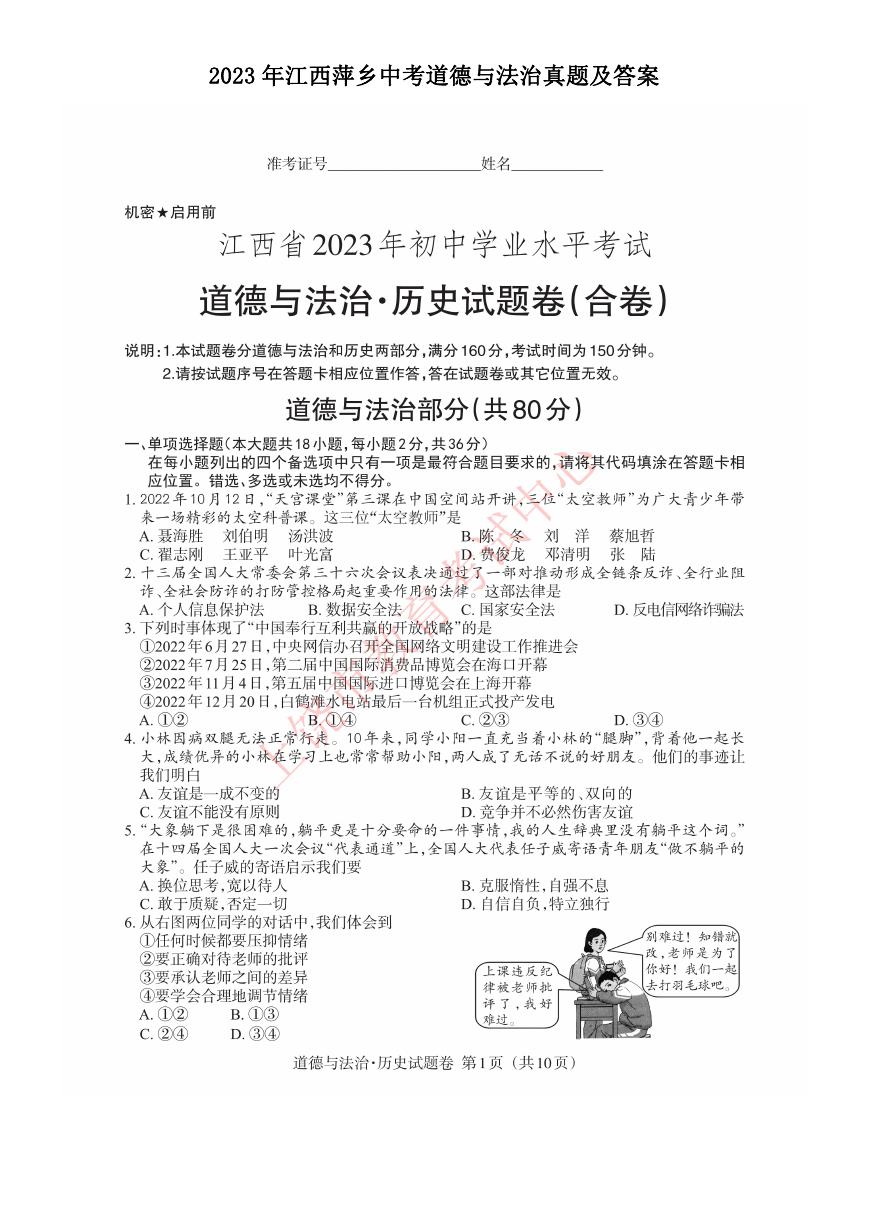 2023年江西萍乡中考道德与法治真题及答案.doc
2023年江西萍乡中考道德与法治真题及答案.doc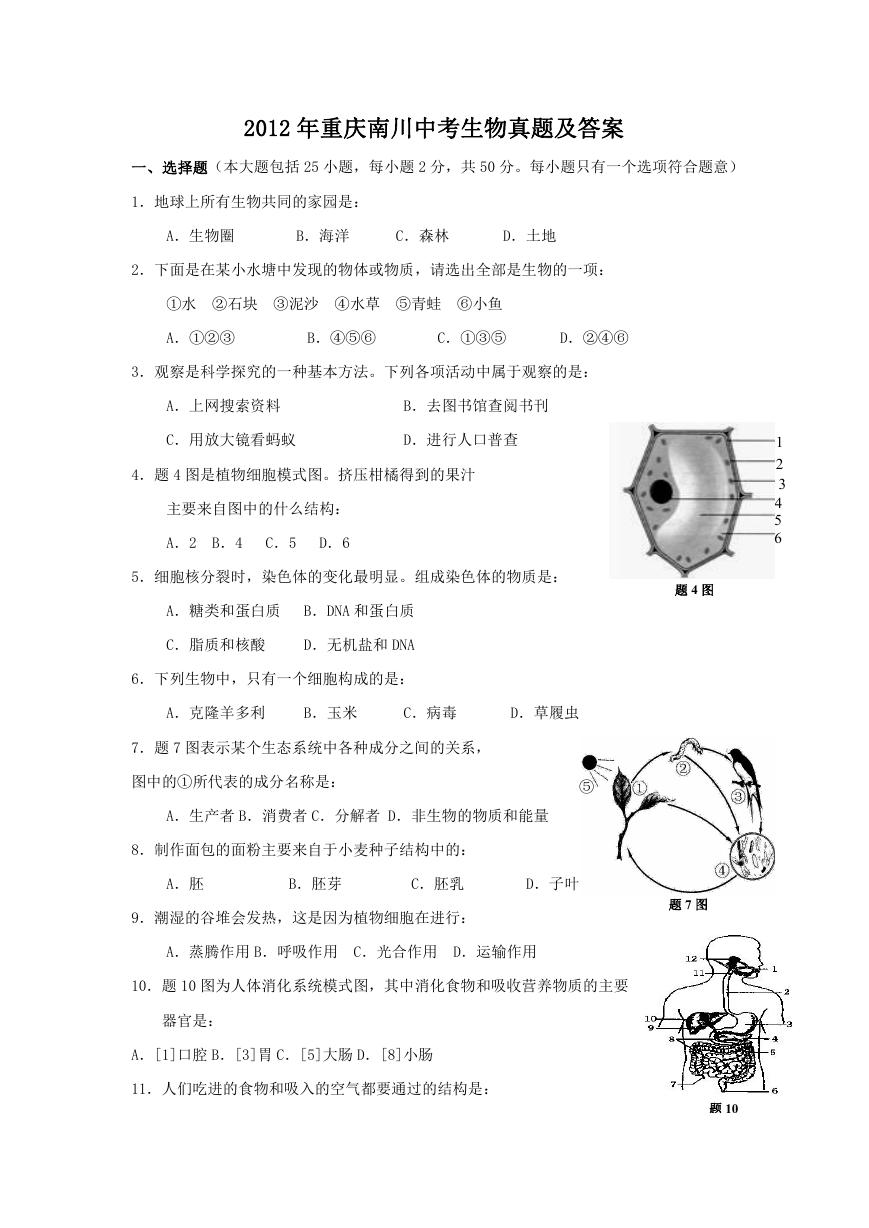 2012年重庆南川中考生物真题及答案.doc
2012年重庆南川中考生物真题及答案.doc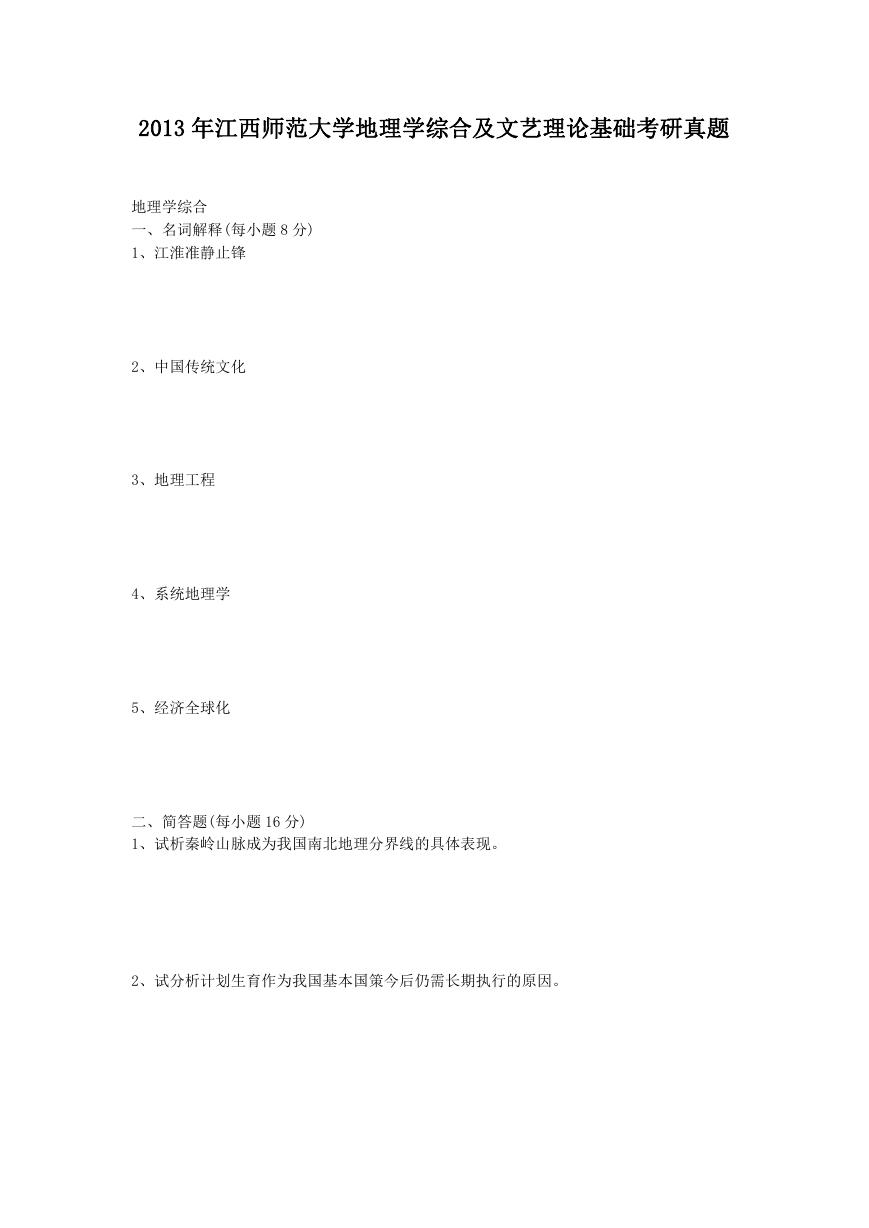 2013年江西师范大学地理学综合及文艺理论基础考研真题.doc
2013年江西师范大学地理学综合及文艺理论基础考研真题.doc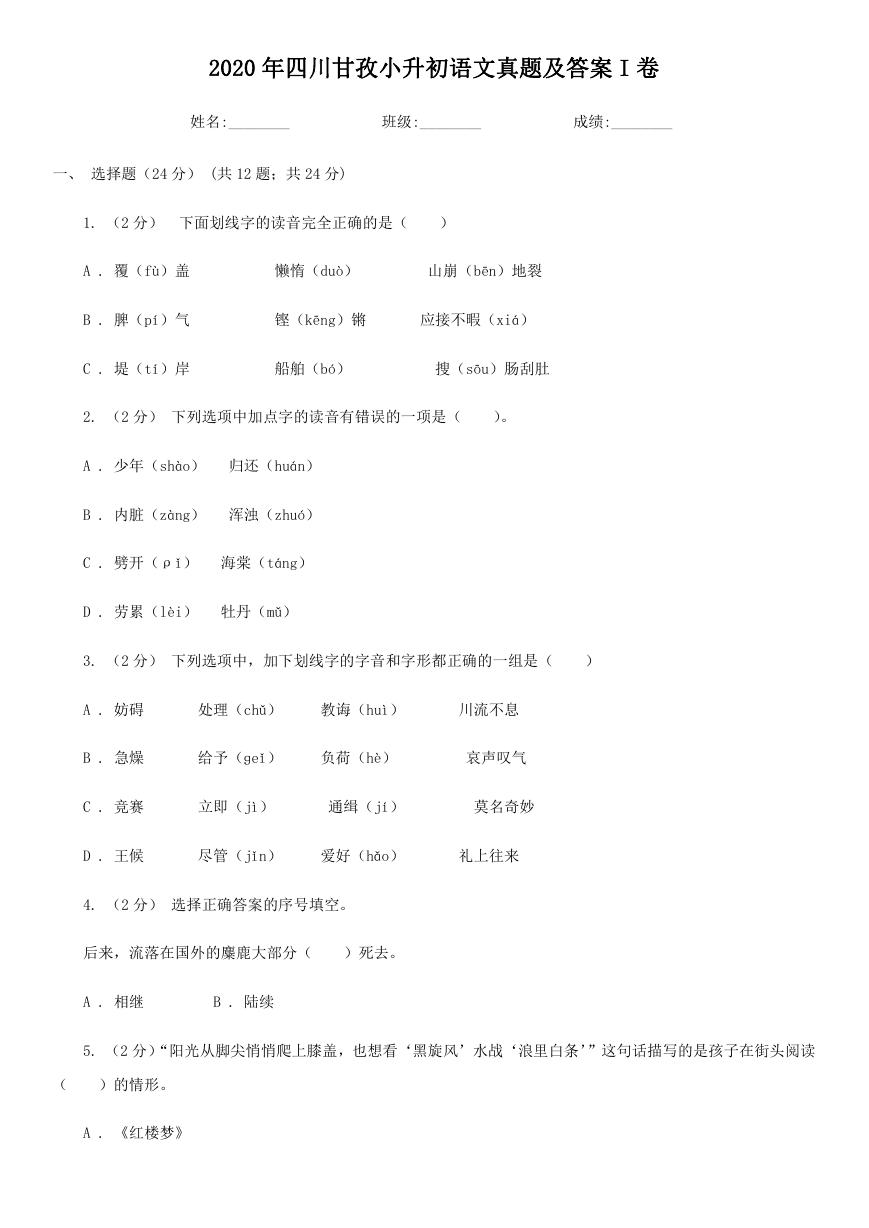 2020年四川甘孜小升初语文真题及答案I卷.doc
2020年四川甘孜小升初语文真题及答案I卷.doc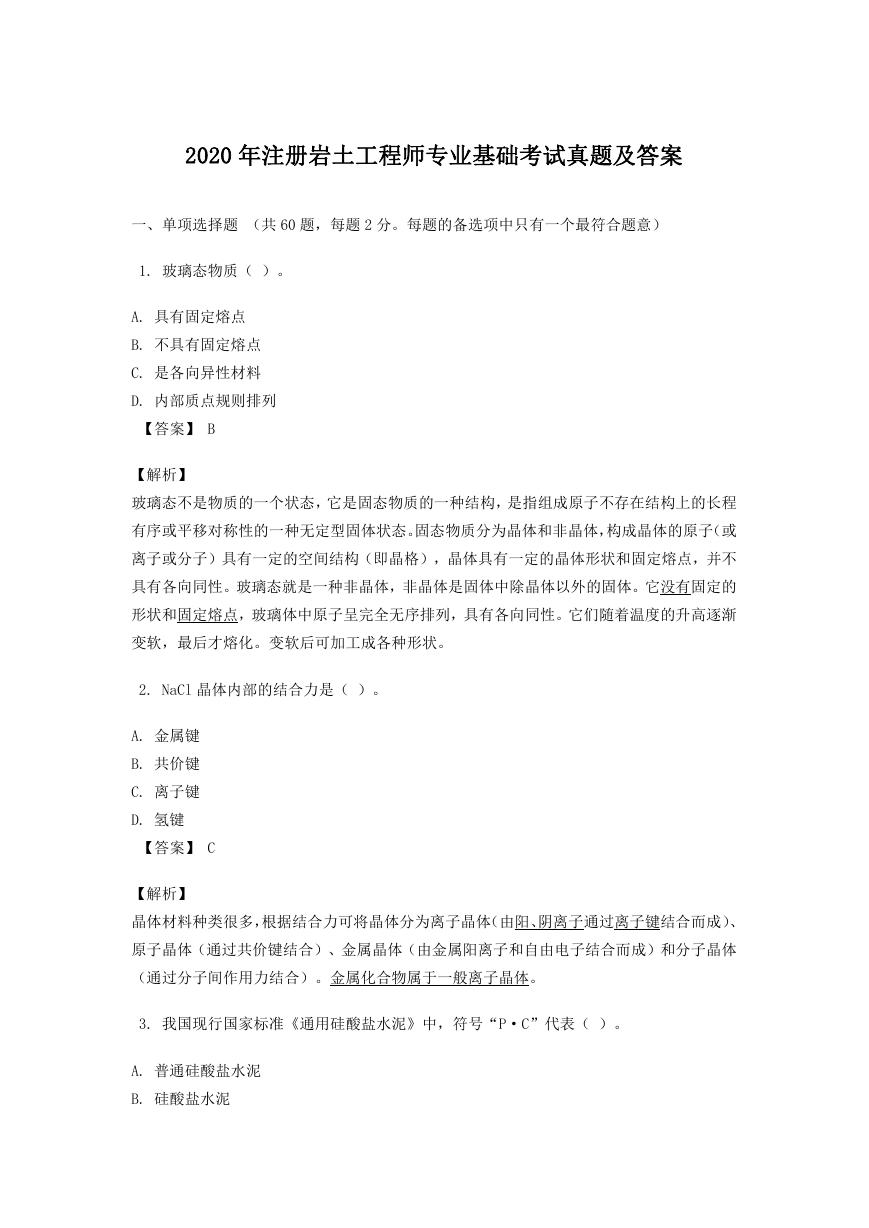 2020年注册岩土工程师专业基础考试真题及答案.doc
2020年注册岩土工程师专业基础考试真题及答案.doc 2023-2024学年福建省厦门市九年级上学期数学月考试题及答案.doc
2023-2024学年福建省厦门市九年级上学期数学月考试题及答案.doc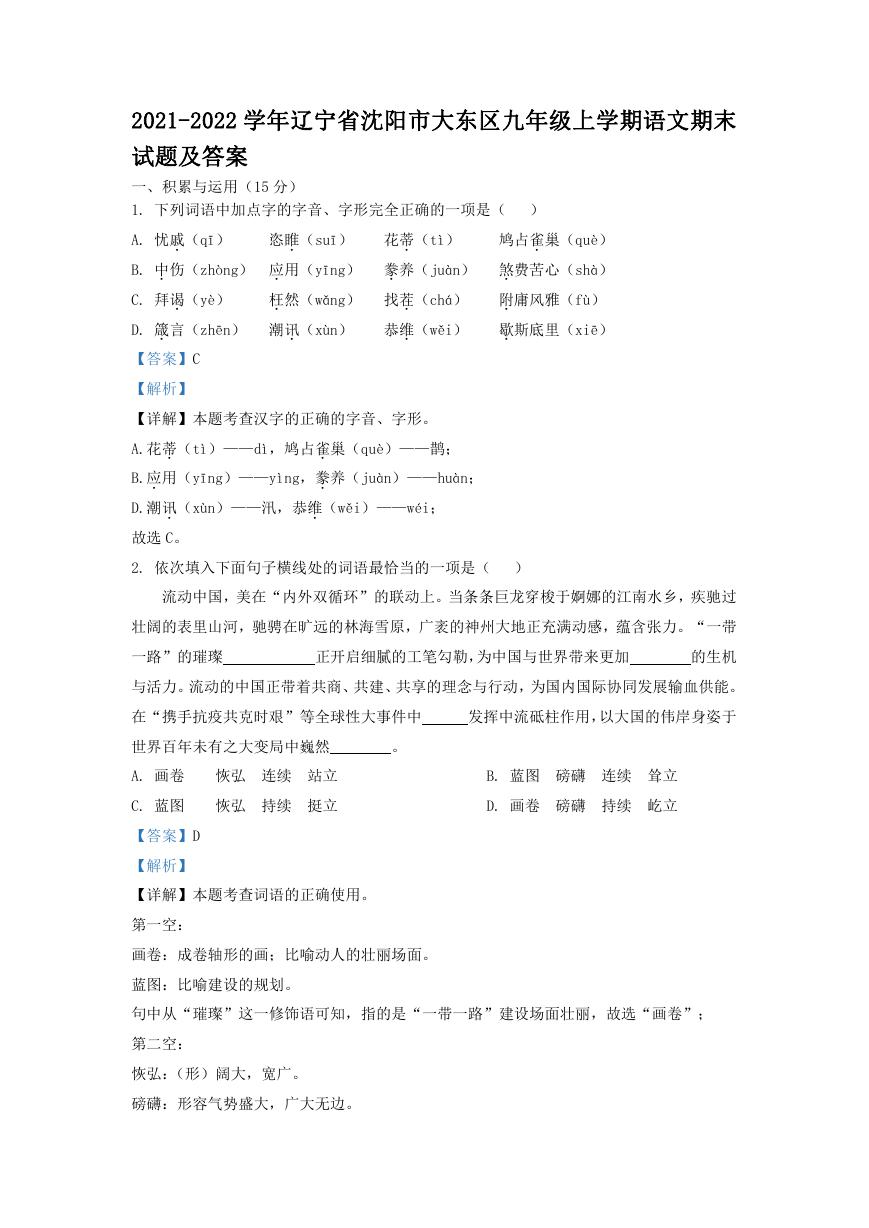 2021-2022学年辽宁省沈阳市大东区九年级上学期语文期末试题及答案.doc
2021-2022学年辽宁省沈阳市大东区九年级上学期语文期末试题及答案.doc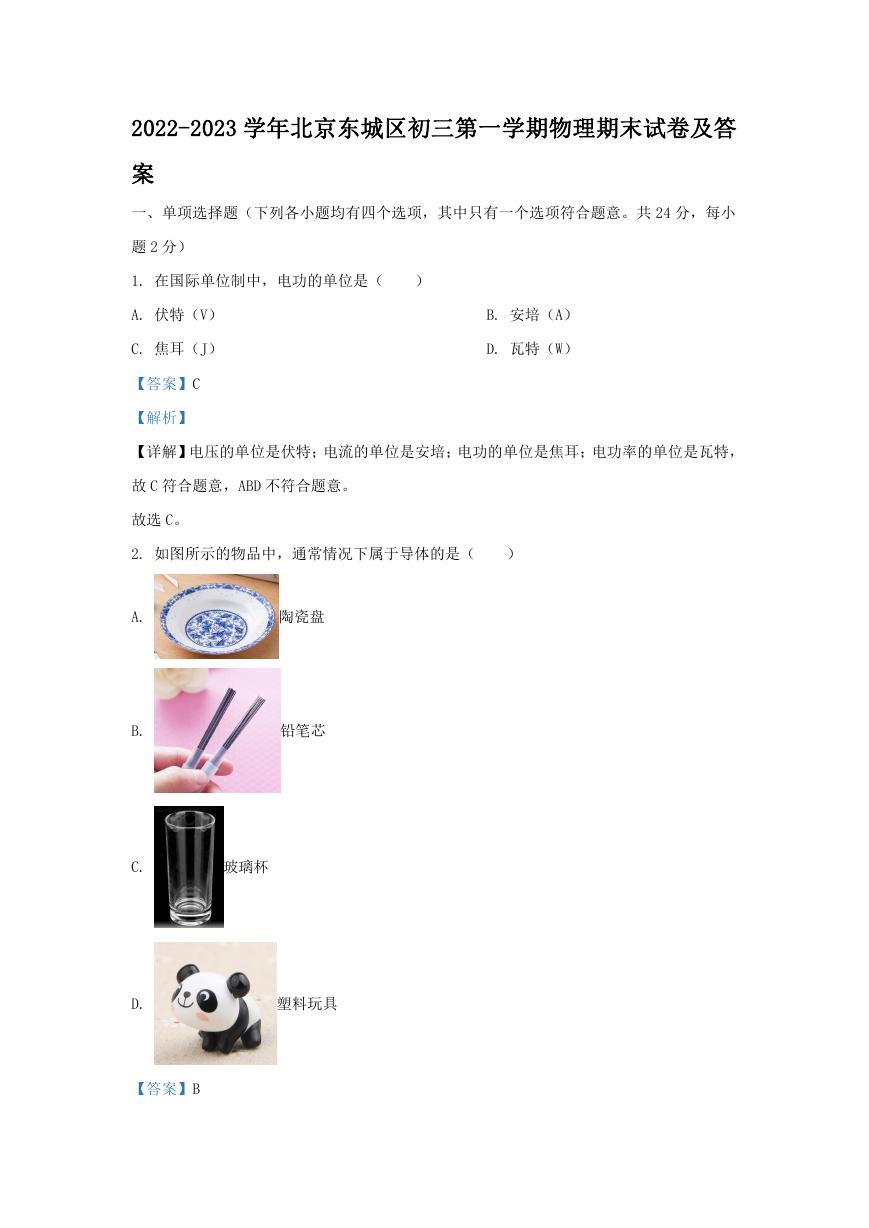 2022-2023学年北京东城区初三第一学期物理期末试卷及答案.doc
2022-2023学年北京东城区初三第一学期物理期末试卷及答案.doc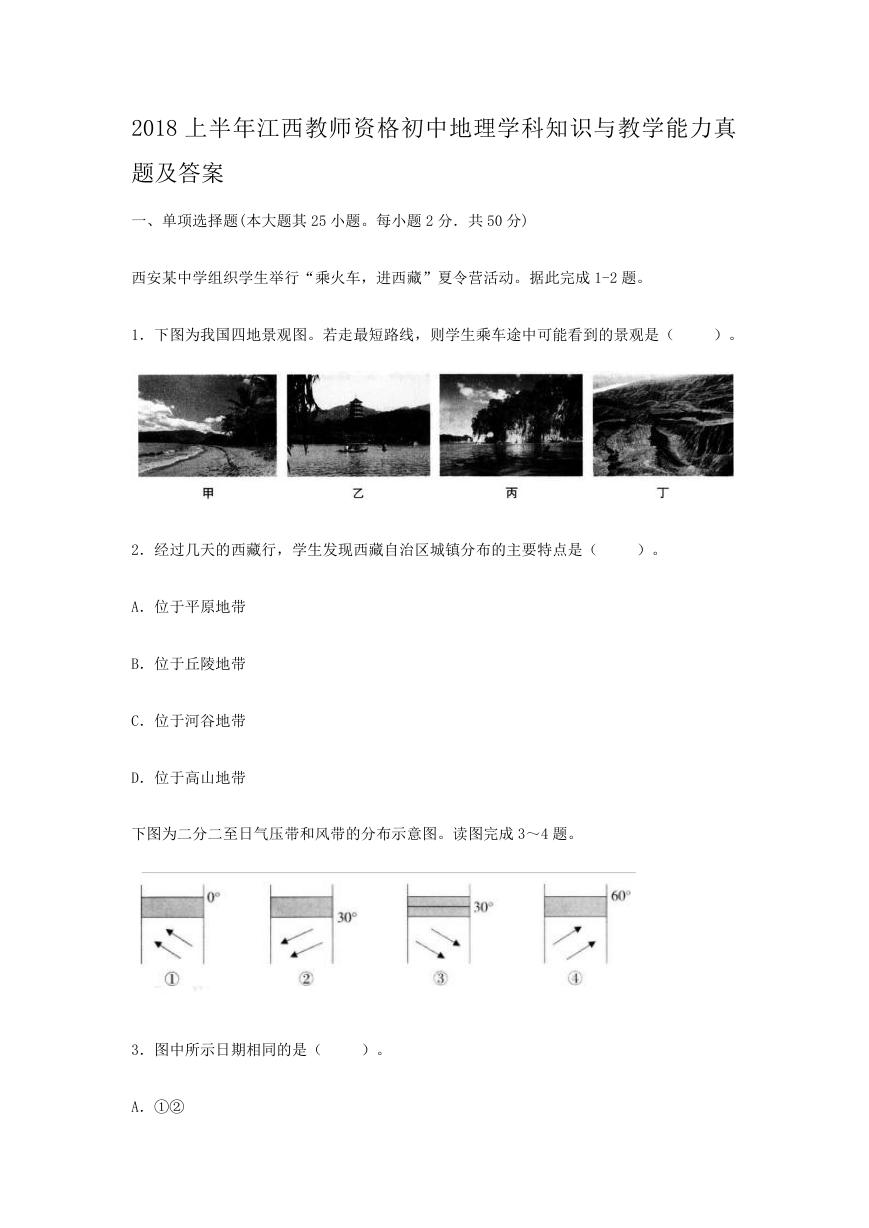 2018上半年江西教师资格初中地理学科知识与教学能力真题及答案.doc
2018上半年江西教师资格初中地理学科知识与教学能力真题及答案.doc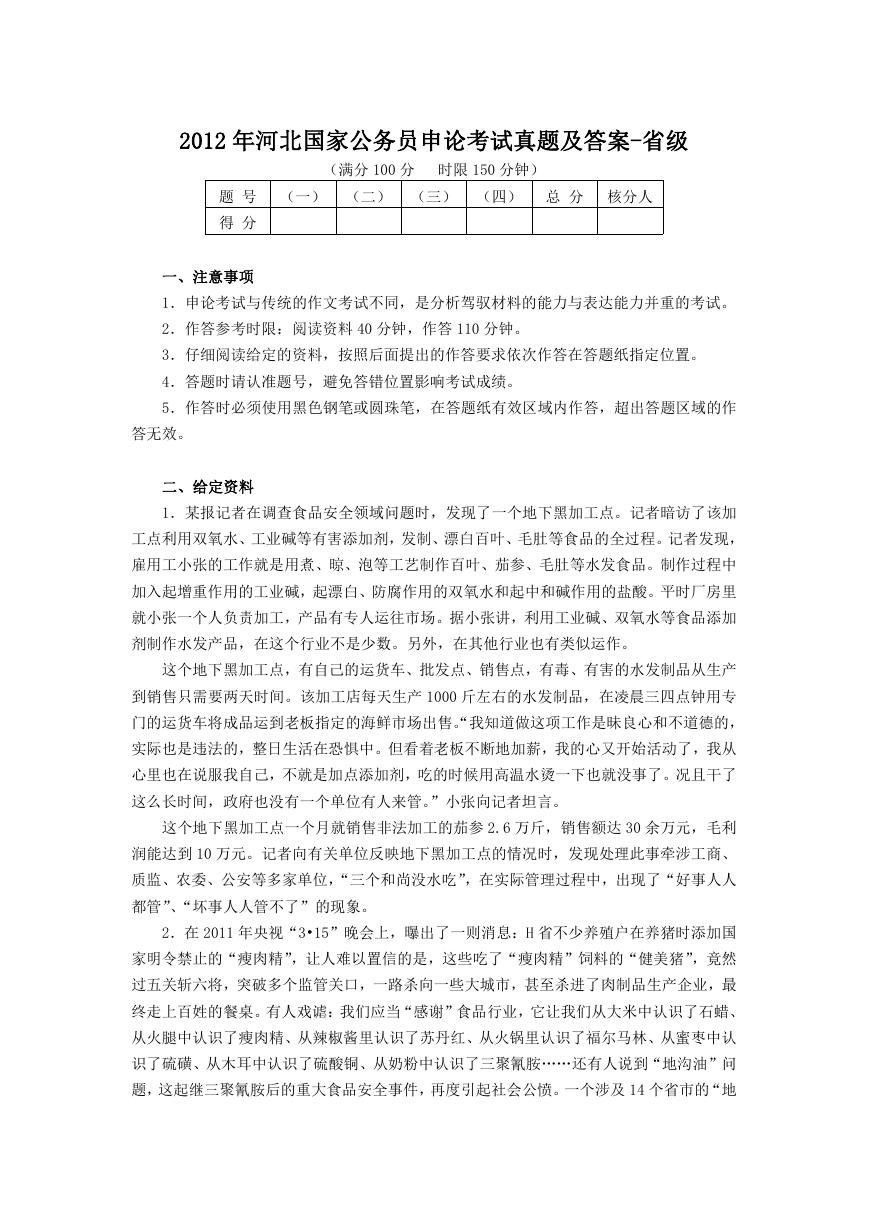 2012年河北国家公务员申论考试真题及答案-省级.doc
2012年河北国家公务员申论考试真题及答案-省级.doc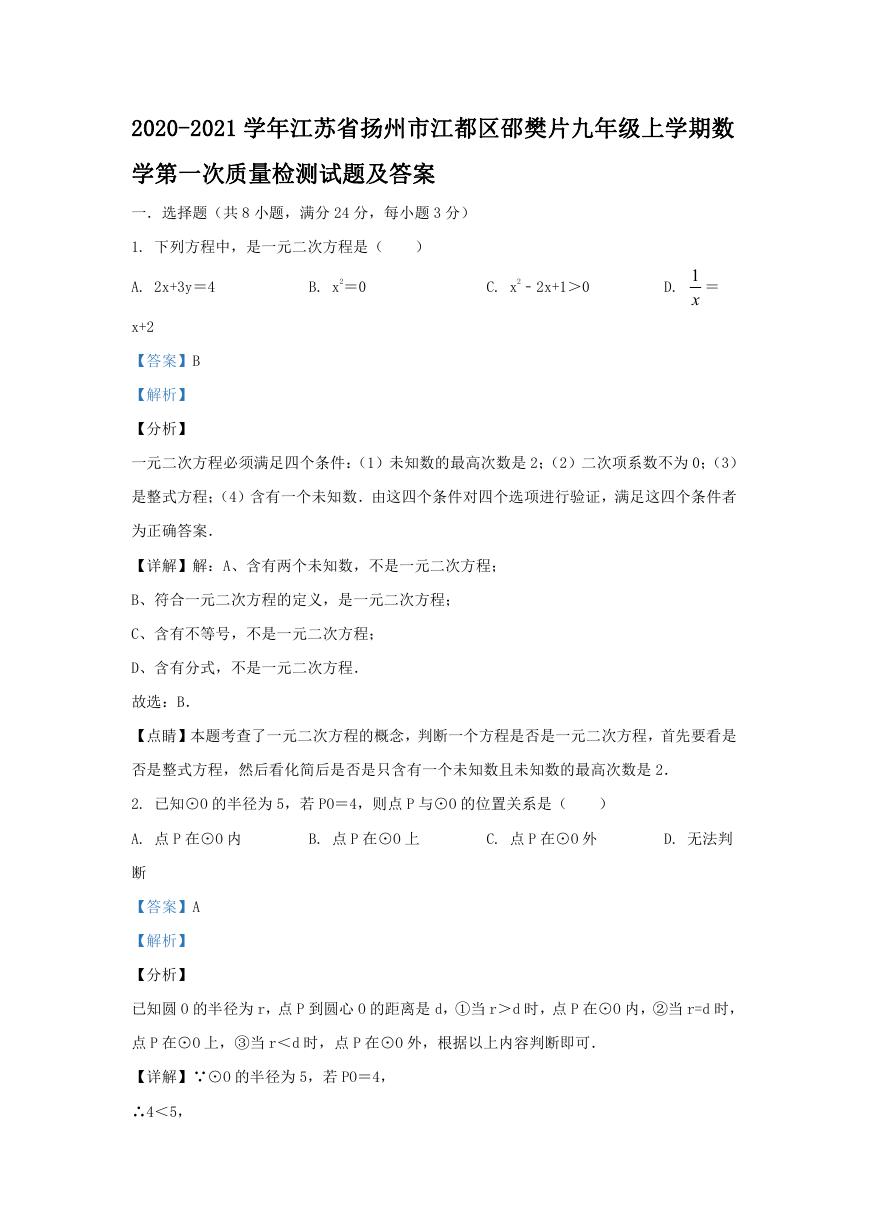 2020-2021学年江苏省扬州市江都区邵樊片九年级上学期数学第一次质量检测试题及答案.doc
2020-2021学年江苏省扬州市江都区邵樊片九年级上学期数学第一次质量检测试题及答案.doc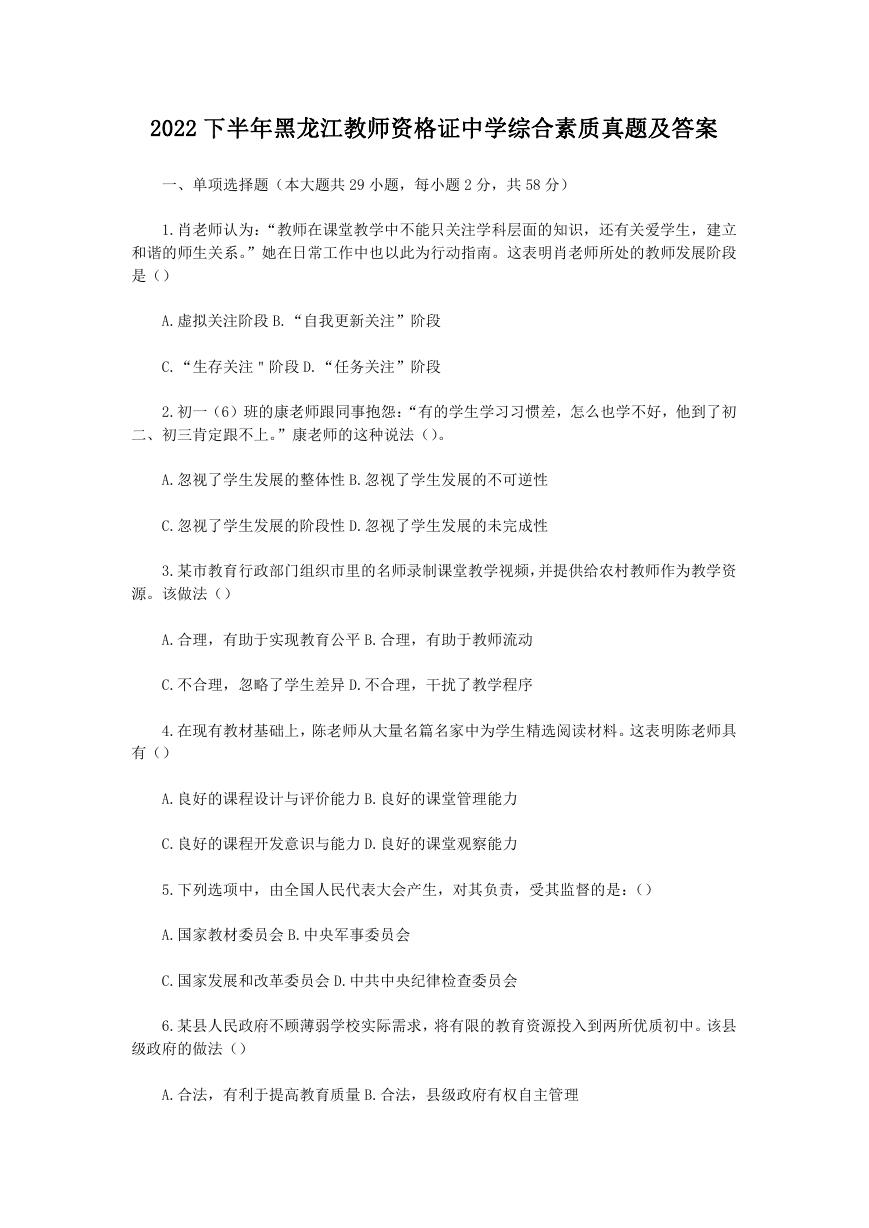 2022下半年黑龙江教师资格证中学综合素质真题及答案.doc
2022下半年黑龙江教师资格证中学综合素质真题及答案.doc